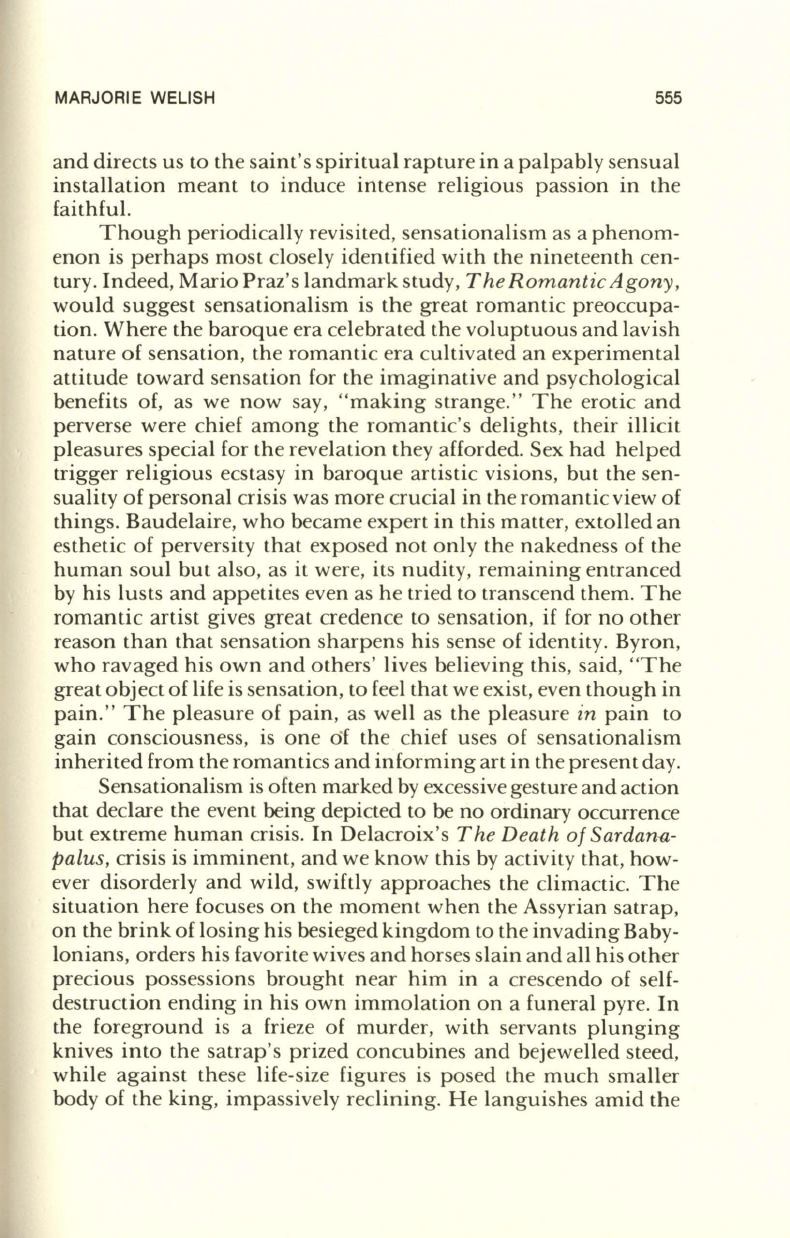
MARJORIE WELISH
555
and directs us to the saint's spiritual rapture in a palpably sensual
installation meant to induce intense religious passion in the
faithful.
Though periodically revisited, sensationalism as a phenom–
enon is perhaps most closely identified with the nineteenth cen–
tury. Indeed, Mario Praz's landmark study,
The Romantic Agony,
would suggest sensationalism is the great romantic preoccupa–
tion. Where the baroque era celebrated the voluptuous and lavish
nature of sensation, the romantic era cultivated an experimental
attitude toward sensation for the imaginative and psychological
benefits of, as we now say, "making strange." The erotic and
perverse were chief among the romantic's delights, their illicit
pleasures special for the revelation they afforded. Sex had helped
trigger religious ecstasy in baroque artistic visions, but the sen–
suality of personal crisis was more crucial in the romantic view of
things. Baudelaire, who became expert in this matter, extolled an
esthetic of perversity that exposed not only the nakedness of the
human soul but also, as it were, its nudity, remaining entranced
by his lusts and appetites even as he tried to transcend them. The
romantic artist gives great credence to sensation, if for no other
reason than that sensation sharpens his sense of identity. Byron,
who ravaged his own and others' lives believing this, said, "The
great object of life is sensation, to feel that we exist, even though in
pain." The pleasure of pain, as well as the pleasure
in
pain to
gain consciousness, is one 6f the chief uses of sensationalism
inherited from the romantics and informing art in the present day.
Sensationalism is often marked by excessive gesture and action
that declare the event being depicted to
be
no ordinary occurrence
but extreme human crisis. In Delacroix's
The Death of Sardan-a–
palus,
crisis is imminent, and we know this by activity that, how–
ever disorderly and wild, swiftly approaches the climactic. The
situation here focuses on the moment when the Assyrian satrap,
on the brink of losing his besieged kingdom to the invading Baby–
lonians, orders his favorite wives and horses slain and all his other
precious possessions brought near him in a crescendo of self–
destruction ending in his own immolation on a funeral pyre. In
the foreground is a frieze of murder, with servants plunging
knives into the satrap's prized concubines and bejewelled steed,
while against these life-size figures is posed the much smaller
body of the king, impassively reclining. He languishes amid the


